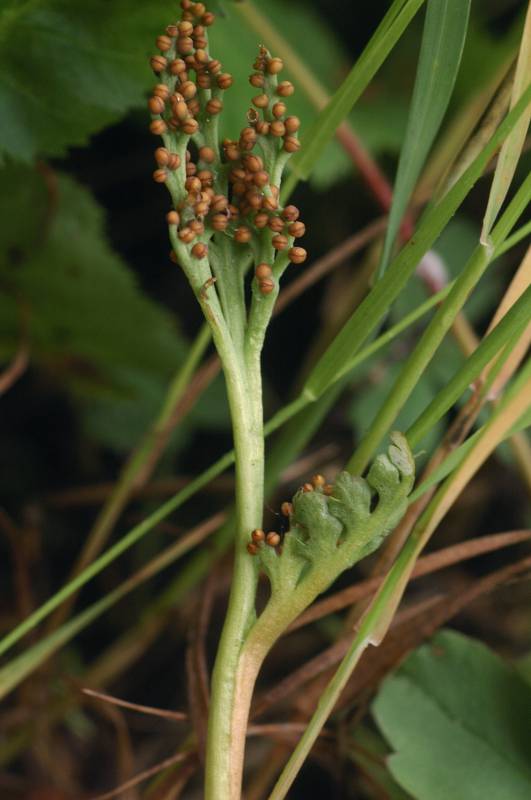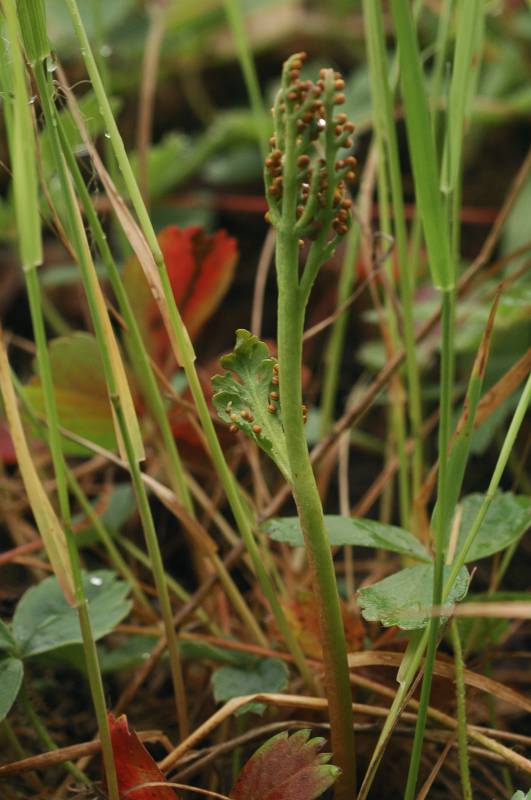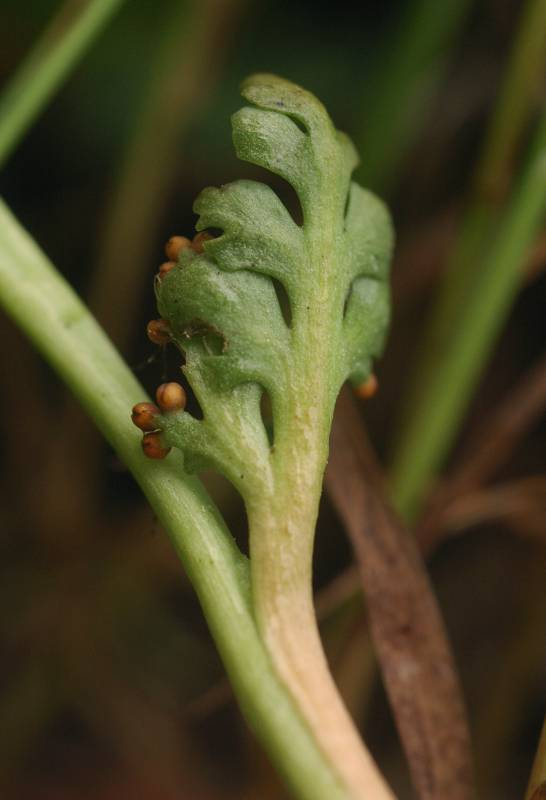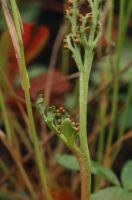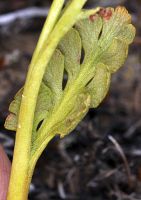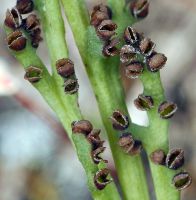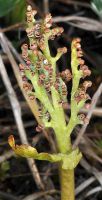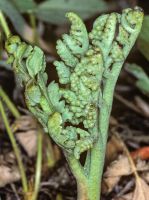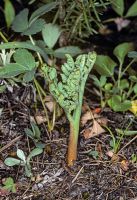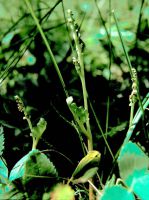Distribution: Occurring chiefly east of the Cascades crest in Washington; British Columbia to California, east to northwestern Montana, and in eastern Canada.
Habitat: Mesic, montane meadows to dense forests.
Spores: May-July
Origin: Native
Growth Duration: Perennial
Conservation Status: Sensitive in Washington (WANHP)
Terrestrial perennials up to 15 cm, from 10 or fewer yellow to brown roots 0.5-1.5 mm in diameter at 1 cm from base. 8-26 mm.
Trophophore blade dull green and leathery, ovate-oblong to deltate-oblong, 1-pinnate, up to 4.5 cm long and 2 cm broad, stalk 8-26 mm; trophophore pinnae in up to 5 pairs, slightly ascending, space between 1st and 2nd pinnae equal to or less than the spaces between 2nd and 3rd pairs, basal pinna pair approximately same size and cutting as adjacent pair, ovate-rhombic to spatulate, lobed to apex, margin entire to unevenly lobed, apex rounded to acute, venation pinnate; sporophores 1-3-pinnate, 2-4 times the length of the trophophore.
Sporangium nearly completely exposed, borne in 2 rows on pinnate sporophore branches; spore surfaces wrinkled and somewhat warty.
Publication: Amer. Fern J. 76: 43, figs. 2, 7. 1986.
PNW Herbaria: Specimen records of Botrychium pedunculosum in the Consortium of Pacific Northwest Herbaria database
WA Flora Checklist: Botrychium pedunculosum checklist entry
OregonFlora: Botrychium pedunculosum information
E-Flora BC: Botrychium pedunculosum atlas page
CalPhotos: Botrychium pedunculosum photos

